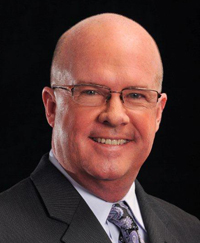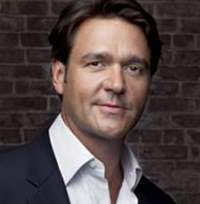Special Reports
2012's Ten Truly Inspired Ideas, part 3
 66-year-old Fort Worth Opera Does a 180
66-year-old Fort Worth Opera Does a 180
 According to Dallas Morning News Critic Scott Cantrell, the Fort Worth Opera, located about 30 miles west of Dallas, “was a pretty dreary provincial company 12 years ago.’’ With the arrival in 2001 of its current artistic director, Darren Keith Woods, a Texas native and former character tenor, things began to turn around. At the same time, Cantrell reports, the Fort Worth Symphony was improving mightily under Music Director Miguel Harth-Bedoya. And the city’s downtown was beginning to blossom as an after-work entertainment center as well.
According to Dallas Morning News Critic Scott Cantrell, the Fort Worth Opera, located about 30 miles west of Dallas, “was a pretty dreary provincial company 12 years ago.’’ With the arrival in 2001 of its current artistic director, Darren Keith Woods, a Texas native and former character tenor, things began to turn around. At the same time, Cantrell reports, the Fort Worth Symphony was improving mightily under Music Director Miguel Harth-Bedoya. And the city’s downtown was beginning to blossom as an after-work entertainment center as well.
Woods has beefed up the casting at Fort Worth Opera and managed to find an audience for contemporary repertoire. He reshaped the season into a spring festival that includes three traditional operas and one contemporary work. The newer pieces are performed in alternative spaces away from the opera’s home, the 2,000-seat Bass Hall in downtown Fort Worth. Recent contemporary operas have included the world premieres of Frau Margot by Thomas Pasatieri and Before Night Falls by Jorge Martin, as well as Angels in America by Péter Eötvös and Philip Glass’s Hydrogen Jukebox.
“Fort Worth is about as red as a city can get,” says Cantrell, “yet the city has really embraced [Woods]. He has the pizzazz to bring it off. He’s started introducing pretty edgy subjects. It’s a combination of good, energetic marketing and his getting out there and really talking to groups.
“The arts organizations that seem to thrive have these really visionary, charismatic leaders who take no prisoners,” says Cantrell. “That is the defining point about really successful artistic companies these days.”
Brooklyn Philharmonic Solicits the Hood for Programming Ideas
“The Brooklyn Philharmonic wasn’t the only organization facing near-bankruptcy and the loss of its home,” says Corinna da Fonseca-Wollheim, a freelance critic for the New York Times. “But they have completely turned things around with some really creative—and also quite hard-nosed—investment in the very communities where they perform.”
Two years ago the orchestra, facing ruinous financial problems and dwindling audiences, canceled its 2010–11 season at the Brooklyn Academy of Music. But in 2011–12 the orchestra came roaring back with an entirely new modus operandi and a new leadership team: Artistic Director Alan Pierson and Executive Director Richard Dare [a Musical America Rising Star]. “People say [the Brooklyn Philharmonic] had an itinerant season because they performed in different venues, that they were nomadic,” says Da Fonseca-Wollheim. “But I think they were the opposite of nomadic because they really put down roots in these three Brooklyn communities.”
They began by visiting neighborhoods. In each one, Dare and Pierson would sit down over cups of coffee with local leaders of all types—clergy, politicians, business people, artists.
“Initially people were sort of sitting there with their arms crossed,” says da Fonseca-Wollheim. “But [Pierson and Dare] were just trying to figure out who the people in these communities were and what interested them.” In the process, the duo made themselves and their orchestra relevant to the community and vice versa.
In the heavily Russian Brighton Beach area, for example, people suggested that the orchestra look into music from the cartoons many of them had watched as children in the Soviet Union. The Orchestra created a special promotional video for the occasion.
“At every single step of the creative chain community members were involved,” says da Fonseca-Wollheim. The Brooklyn Philharmonic is no longer “like a visiting spaceship of an old, dead culture. It has become something that people want to get involved in and help shape.” At that first Brighton Beach concert, the orchestra played Soviet-era cartoon music and set up ancillary projects along the cartoon theme. The concert was a huge success. In the hip, Bedford-Stuyvesant neighborhood, it offered local DJs and composers a chance to riff on Beethoven’s Third Symphony. And in Downtown Brooklyn, they acknowledged the area’s indie-music scene with a program of several premieres. Enthusiastic audiences showed up, and the orchestra’s finances are improving.
 Opera Company of Philadelphia
Opera Company of Philadelphia
Goes Patriotic
“Traditionally the Opera Company of Philadelphia has not been adventurous,” says David Patrick Stearns, music critic of The Philadelphia Inquirer. But in the last five years—roughly parallel to David B. Devan’s tenure with the company, first as general manager, now as president—new work has increasingly become part of the mix. Last year the opera launched an ambitious plan to present one new American work per season over the next decade, virtually all of them co-commissions. In September, high-profile baritone Nathan Gunn, who specializes in contemporary and American repertoire, came on board as director of the company’s American Repertoire Council to help oversee the project.
Already on the schedule are Jennifer Higdon’s Cold Mountain, taken from the book of the same name, and, in February, Silent Night, an opera by Kevin Puts that won the 2012 Pulitzer Prize. Oscar, a co-commission with the Santa Fe Opera based on the life of Oscar Wilde (by composer Theodore Morrison and librettist/director John Cox) is also in the pipeline, starring David Daniels in the title role. Gunn takes the starring role in Higdon’s opera, scheduled for 2016.
The nearly 3,000-seat Academy of Music auditorium remains the company’s home base, but two of the season’s five productions are staged in the 650-seat Perelman Theater in the Kimmel Center. Having a small theater gives the company “almost carte blanche” in terms of programming, says Stearns.
Because the Perelman’s smaller, they can sell out anything,” he says. “It’s almost the law of averages. One out of 25 opera goers will be attracted to this kind of [new work]. And if they get enough of them, they’ll fill the Perelman Theater. Stearns emphasizes the importance of new American work and heralds the company’s key role in it. “It’s us, it’s our identity, and they’re excited about.
Return to Part 1

WHO'S BLOGGING

Law and Disorder by GG Arts Law
Career Advice by Legendary Manager Edna Landau
An American in Paris by Frank Cadenhead





 FEATURED JOBS
FEATURED JOBS

 RENT A PHOTO
RENT A PHOTO


